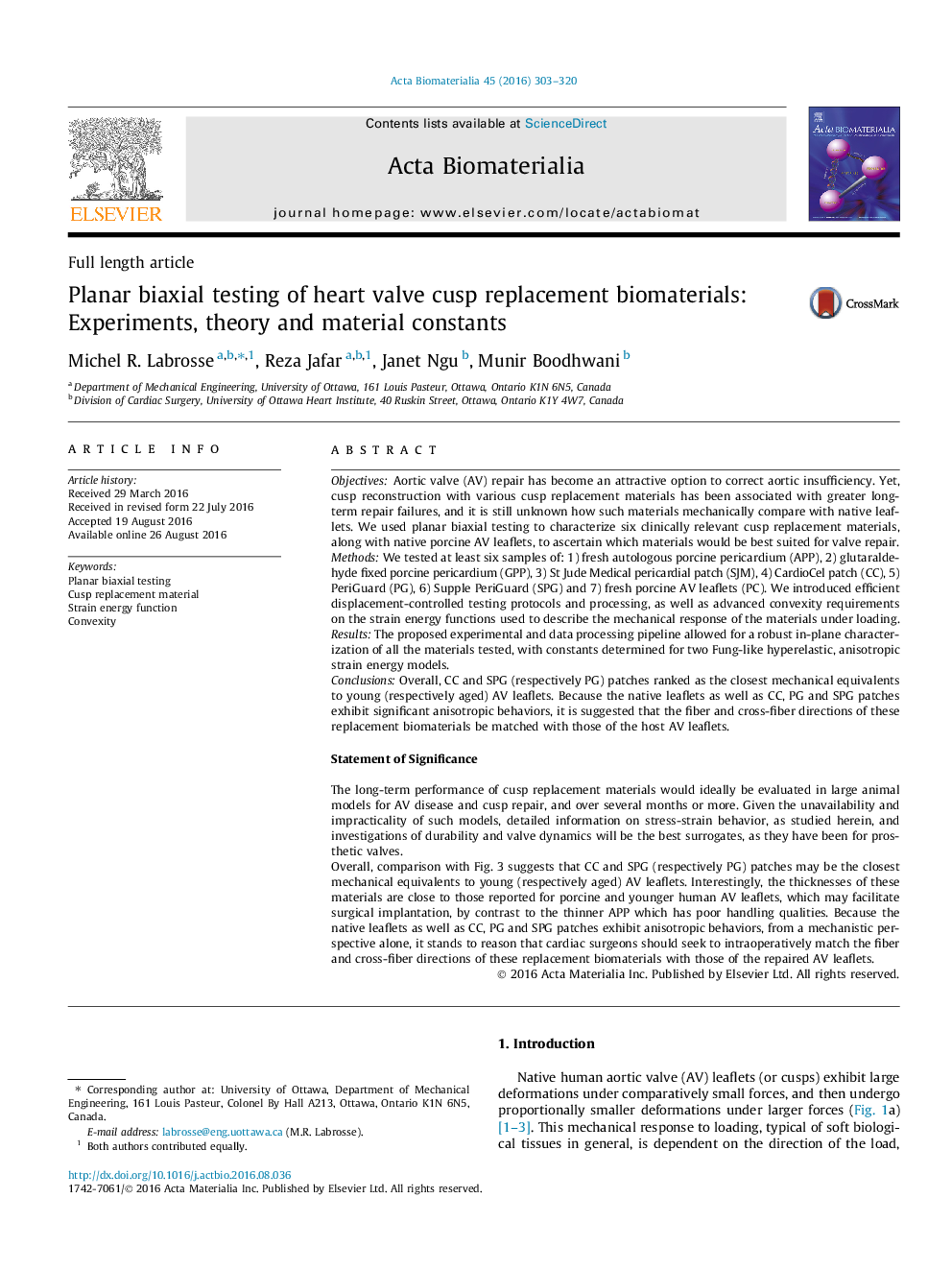| کد مقاله | کد نشریه | سال انتشار | مقاله انگلیسی | نسخه تمام متن |
|---|---|---|---|---|
| 6450318 | 1415941 | 2016 | 18 صفحه PDF | دانلود رایگان |
ObjectivesAortic valve (AV) repair has become an attractive option to correct aortic insufficiency. Yet, cusp reconstruction with various cusp replacement materials has been associated with greater long-term repair failures, and it is still unknown how such materials mechanically compare with native leaflets. We used planar biaxial testing to characterize six clinically relevant cusp replacement materials, along with native porcine AV leaflets, to ascertain which materials would be best suited for valve repair.MethodsWe tested at least six samples of: 1) fresh autologous porcine pericardium (APP), 2) glutaraldehyde fixed porcine pericardium (GPP), 3) St Jude Medical pericardial patch (SJM), 4) CardioCel patch (CC), 5) PeriGuard (PG), 6) Supple PeriGuard (SPG) and 7) fresh porcine AV leaflets (PC). We introduced efficient displacement-controlled testing protocols and processing, as well as advanced convexity requirements on the strain energy functions used to describe the mechanical response of the materials under loading.ResultsThe proposed experimental and data processing pipeline allowed for a robust in-plane characterization of all the materials tested, with constants determined for two Fung-like hyperelastic, anisotropic strain energy models.ConclusionsOverall, CC and SPG (respectively PG) patches ranked as the closest mechanical equivalents to young (respectively aged) AV leaflets. Because the native leaflets as well as CC, PG and SPG patches exhibit significant anisotropic behaviors, it is suggested that the fiber and cross-fiber directions of these replacement biomaterials be matched with those of the host AV leaflets.Statement of SignificanceThe long-term performance of cusp replacement materials would ideally be evaluated in large animal models for AV disease and cusp repair, and over several months or more. Given the unavailability and impracticality of such models, detailed information on stress-strain behavior, as studied herein, and investigations of durability and valve dynamics will be the best surrogates, as they have been for prosthetic valves.Overall, comparison with Fig. 3 suggests that CC and SPG (respectively PG) patches may be the closest mechanical equivalents to young (respectively aged) AV leaflets. Interestingly, the thicknesses of these materials are close to those reported for porcine and younger human AV leaflets, which may facilitate surgical implantation, by contrast to the thinner APP which has poor handling qualities. Because the native leaflets as well as CC, PG and SPG patches exhibit anisotropic behaviors, from a mechanistic perspective alone, it stands to reason that cardiac surgeons should seek to intraoperatively match the fiber and cross-fiber directions of these replacement biomaterials with those of the repaired AV leaflets.
181
Journal: Acta Biomaterialia - Volume 45, November 2016, Pages 303-320
